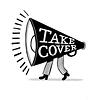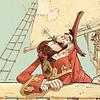You need to sign in or sign up before continuing.
Take a photo of a barcode or cover
Reviews tagging 'Rape'
Monsters: What do we do with great art by bad people? by Claire Dederer
113 reviews
Moderate: Adult/minor relationship, Infidelity, Mental illness, Misogyny, Pedophilia, Racism, Rape, Sexism, Sexual assault, Suicide, Antisemitism, Suicide attempt, Schizophrenia/Psychosis , Abandonment, Alcohol
Graphic: Child abuse, Pedophilia, Rape, Sexual assault, Sexual violence
Moderate: Addiction, Adult/minor relationship, Alcoholism, Sexual assault, Suicide, Transphobia, Alcohol
But surprisingly, what this book ends up doing is meandering through unoriginal thoughts, well-trodden territory. Even an uncultured plebe like me remembers Ali Wong making the point of wanting a wife, and authors like Rachel Cusk and Elena Ferrante covering plenty of ground on the conflicts of motherhood and art. In the concluding pages, Dederer's thoughts finally arrive at the revelation that we're only human, and so are our idols. Yep.
I'd also refute this idea of removing moral obligations from the fan. It feels like the soul-cleansed mantra of our time -- everything is pointless, so none of it is my fault. How about acknowledging that what we consume and idolize becomes a part of us, how we think and therefore how we act and relate to the world, how we treat our fellow humans and shape society, who we honor and who we ignore?
There's not even a thought about how we have unprecedented access to art, an abundance of choice -- we can discard our artists and idols with lightning-fast ease, blocks and unfollows, so why are we harping on about loving the abusers and rapists?
I think what especially bothers me is the tone of privilege throughout, like watching someone discover empathy for the first time.
I do appreciate "Monsters'' for asking the question that's made me so incensed, and search more deeply within my own participation in consumerism and fandoms, expression and art.
Graphic: Adult/minor relationship, Alcoholism, Cursing, Domestic abuse, Gun violence, Infidelity, Misogyny, Pedophilia, Physical abuse, Rape, Sexism, Suicide, Antisemitism
I've had my eye on this book for a while, and I have to admit I was slightly nervous to actually pick it up, worried what I would find inside, and I think that is exactly the reason why I did pick it up. It is a book on monsters who've made art, and that is to say, a large chunk of the people who've made art. The book discuses many specific cases, but also takes a holistic view of the larger situation, recognising that both the finer details and bigger pictures are important. There are a few people in this book that I do not know of, which is probably due to the fact I was born in 2005, but despite not being aware of some specific artists and their art, I was still interested to read about what they had done and what they had made and what the author had to say about them - I obviously still felt the anger towards these peoples' crimes, but I had not interacted with their art and did not have an existing feeling towards their art prior to learning of their crimes, and therefore my feelings will differ from those who did. However, I was - sadly - able to relate a lot of the circumstances to artists that I have been aware of.
This leads to a point which, for me, is one of the most memorable from the book. I will enclose it in spoiler tags, although I'm not sure it really classes as a spoiler, but just in case.
The book also discusses who is afforded this chance to be both a monster and a revered artist, and how these people are always men. Men who've been afforded the status of 'genius' are allowed to commit heinous crimes and people will still love their work, while the bar is much lower for women. This was a very necessary discussion, and I agreed with a large part of it. However, it was during some of this discussion where I had a major problem. Sylvia Plath's self harm was repeatedly discussed alongside awful crimes committed by people against other people. Self harm is not a crime. Self harm does not make someone a monster. The difference was briefly mentioned, but I do not know why self harm had to even be mentioned. The rest of the book mainly discusses monstrous men who had committed vile crimes - mainly towards women - and Sylvia Plath does not belong. She was a victim of monsters, she was not a monster. It made me quite upset to see her discussed alongside someone who had shot other people, as these acts are not remotely the same.
Capitalism and its effects are discussed throughout this book. This is a vital layer of the discussion, and I appreciated a lot of her comments on this. In the final chapters,
Overall, although a lot of what was discussed was not ground-breaking, it was very interesting to read about all of these issues and others together, linked by the question of 'what do we do with great art by bad people?' And it was very interesting to read how it was summed up at the end. I would recommend this book to most people, ensuring that they would be okay with some of the subject matter discussed (although rarely are the crimes gone into in great details, rather they are normally named and sometimes circumstances are described), as the topic applies to everyone, as everyone is a consumer, and the world of art - and the rest of the world - is full of great things made by bad people.
Graphic: Addiction, Adult/minor relationship, Alcoholism, Child abuse, Pedophilia, Rape, Suicide
Moderate: Gun violence, Racism, Self harm, Sexual violence, Transphobia, Violence, Antisemitism
Moderate: Alcoholism, Child abuse, Domestic abuse, Misogyny, Rape, Sexual assault, Sexual violence, Sexual harassment
Graphic: Addiction, Adult/minor relationship, Alcoholism, Child abuse, Death, Mental illness, Misogyny, Pedophilia, Rape, Self harm, Sexism, Sexual assault, Sexual content, Sexual violence, Suicidal thoughts, Suicide, Terminal illness, Toxic relationship, Violence, Trafficking, Religious bigotry, Suicide attempt, Schizophrenia/Psychosis , Alcohol, Sexual harassment
Minor: Infidelity, Pedophilia, Racism, Rape, Suicide, Violence, Antisemitism
There are several stand out chapters in the first half (most of which feature in part an artist who has done a monstrous thing) that I found gave me a new perspective and ideas to futher reflect on. Dederer spends a lot of this first half on society's reactions to an artist's crimes, from the fans to the critics (mainly herself) and gets across that to the audience it is far more emotional than logical when it comes to dealing with work you love being tainted by the artist's crimes. It was quite an enjoyable read throughout this part (the section which she discusses people using the excuse "they didn't know any better" in regards to monsterous artists of the past, using Richard Wagner as an example, was really eye opening to me).
I think the biggest problem with the second half of the book is made prominent with the chapter "Am I a Monster?", where Dederer makes this too autobiographical by asking herself if she is as bad as the artists featured in the previous chapters. It isn't the first instant of her adding her own biography into the book (she does state that one's own feelings on these issues effects their opinions on the artists) but here it just makes it so that she appears to think that her alcoholism makes her just as bad as the rapists, pedophiles and murders. This is where the book falls too far into an uninteresting memoir that did not engage with me and the conflation only continues from there.
There is also something quite irksome about her chapter "Abandoning Mothers", where she states that "If the male crime is rape, the female crime is the failure to nuture. The abandonment of children is the worst thing a woman can do". The problem is, there is a long list of women artists who have done far more horrific things, to children and others, than to abandon. It really felt like she didn't really try to find monstrous women (with the execption of J K Rowling, Virignia Woolf & Valerie Solanas) and her statement of a "failure to nuture" just seems sexist. I was unsure if she meant it in terms of what society deems the worst thing a woman can do, but throughout the chapter she writes about her own experiences with motherhood and how she sees abandonment as terrible (which it is but again, the worst thing?).
This isn't a completely valueless book, but by it's conclusion I find that it's a bit of a cop-out, where Dederer, by weaving her memoir through the book, tries to assuage her guilt by basically stating that there's no ethical consumption under capitalism and that we can't help what we love so we should just enjoy the art. While their is some truth to that, using the "no ethical consumption under capitalism" argument just removes all responsibility from the audience. Yes, we did not commit these horrid acts but should that mean we should still support the artists if they are continuing to hurt others or avoid consequences for their actions? Shouldn't we mitigate harm instead? Buy art second hand e.t.c.?
We can still enjoy said art and critique it. However, instead of ending it with nuance, Dederer ends it with very little. One size fits all.
Graphic: Domestic abuse, Pedophilia, Rape
Moderate: Alcoholism, Child abuse, Sexual assault
Minor: Addiction, Adult/minor relationship, Abandonment
Minor: Alcoholism, Child abuse, Domestic abuse, Rape, Sexual assault, Suicide
Moderate: Alcoholism, Pedophilia, Racism, Rape, Sexism, Antisemitism, Grief





